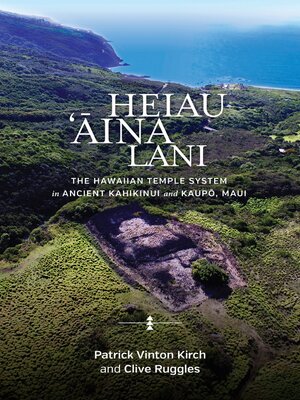Heiau, 'Āina, Lani
ebook ∣ The Hawaiian Temple System in Ancient Kahikinui and Kaupō, Maui
By Patrick Vinton Kirch

Sign up to save your library
With an OverDrive account, you can save your favorite libraries for at-a-glance information about availability. Find out more about OverDrive accounts.
Find this title in Libby, the library reading app by OverDrive.



Search for a digital library with this title
Title found at these libraries:
| Library Name | Distance |
|---|---|
| Loading... |
Heiau, 'Āina, Lani is a collaborative study of 78 temple sites in the ancient moku of Kahikinui and Kaupō in southeastern Maui, undertaken using a novel approach that combines archaeology and archaeoastronomy. Although temple sites (heiau) were the primary focus of Hawaiian archaeologists in the earlier part of the twentieth century, they were later neglected as attention turned to the excavation of artifact-rich habitation sites and theoretical and methodological approaches focused more upon entire cultural landscapes. This book restores heiau to center stage. Its title, meaning "Temples, Land, and Sky," reflects the integrated approach taken by Patrick Vinton Kirch and Clive Ruggles, based upon detailed mapping of the structures, precise determination of their orientations, and accurate dating.
Heiau, 'Āina, Lani is the outcome of a joint fieldwork project by the two authors, spanning more than fifteen years, in a remarkably well-preserved archaeological landscape containing precontact house sites, walls, and terraces for dryland cultivation, and including scores of heiau ranging from simple upright stones dedicated to Kāne, to massive platforms where the priests performed rites of human sacrifice to the war god Kū. Many of these heiau are newly discovered and reported for the first time in the book.
The authors offer a fresh narrative based upon some provocative interpretations of the complex relationships between the Hawaiian temple system, the landscape, and the heavens (the "skyscape"). They demonstrate that renewed attention to heiau in the context of contemporary methodological and theoretical perspectives offers important new insights into ancient Hawaiian cosmology, ritual practices, ethnogeography, political organization, and the habitus of everyday life. Clearly, Heiau, 'Āina, Lani repositions the study of heiau at the forefront of Hawaiian archaeology.







